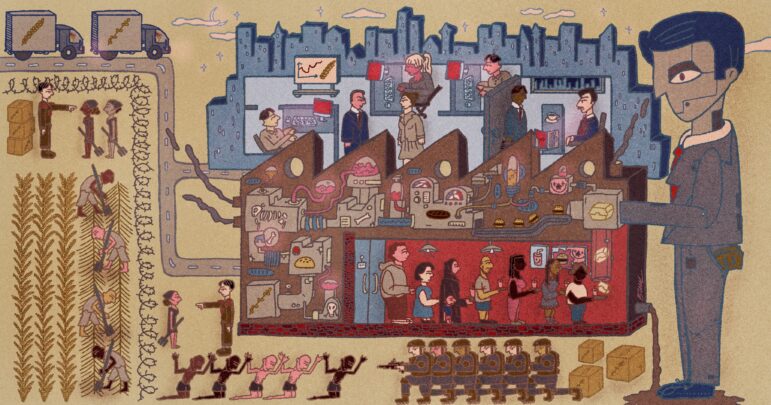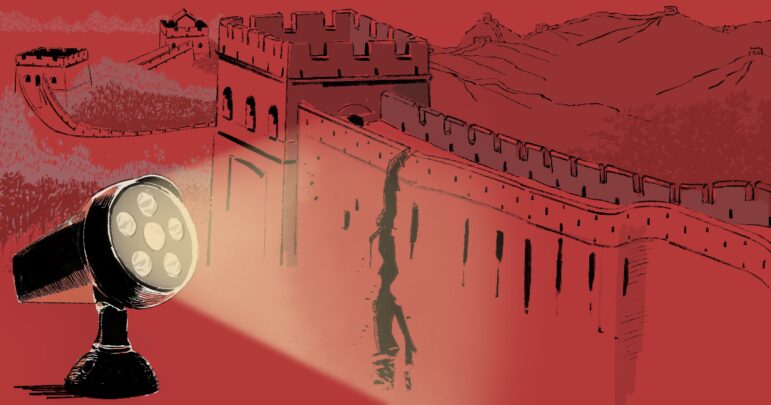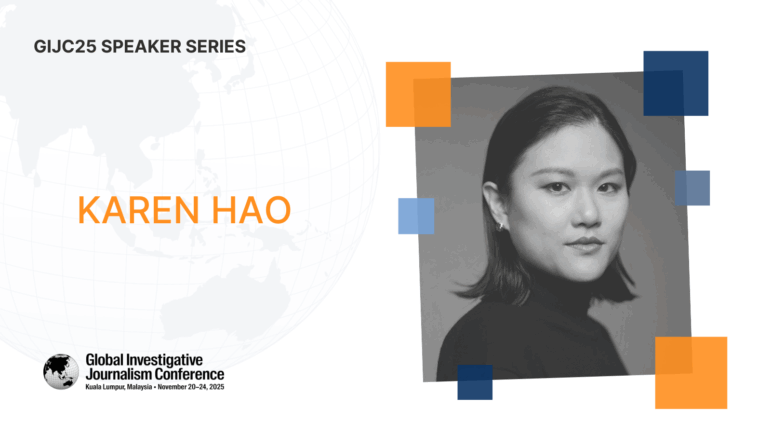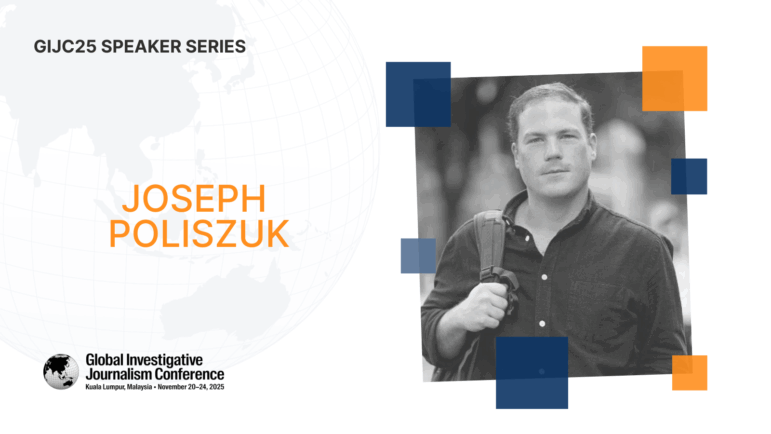

Image: GIJN
Editor’s Note: Ahead of the Global Investigative Journalism Conference in Malaysia, GIJN is publishing a series of short interviews with a globally representative sample of conference speakers. These are among the more than 300 leading journalists and editors who will be sharing practical investigative tools and insights at the event.
A member of the Kiowa Tribe, Tristan Ahtone is editor-at-large at nonprofit climate justice outlet Grist, an award-winning investigative journalist, and a leading innovator in methodologies for exposing abuses facing Indigenous peoples. Having previously served as editor-in-chief at the Texas Observer and Indigenous Affairs editor at High Country News, his investigations have featured in outlets from Al Jazeera America to PBS NewsHour to Indian Country Today, and his honors include a George Polk Award.
This year, the Indigenous Journalists Association (IJA) recognized Ahtone and his colleagues at Grist with the prestigious 2025 Richard LaCourse Award for Investigative Journalism for their Misplaced Trust series, which exposed how some universities profit from more than eight million acres of land stolen from 123 Indigenous nations.
Ahtone will lead a workshop session on Indigenous Data, Colonial Archives: Mapping the Past to the Present at the 14th Global Investigative Journalism Conference in Kuala Lumpur (GIJC25).
GIJN: Of all the investigations you or your team have worked on, which has been your favorite, and why?
Tristan Ahtone: Our most recent land investigation, Misplaced Trust, has been a real highlight. The team was a dream to work with, the material was incredibly challenging, and the stories themselves have been eye-opening in terms of understanding America’s ongoing embrace of colonization. As a journalist, I’m not interested in giving readers easy answers. I’d rather ask difficult questions and challenge audiences to think differently. This series does that, but it wouldn’t have been possible without the team behind it and the many conversations that shaped the work. I’m grateful to have such thoughtful collaborators.
GIJN: What are the biggest challenges for investigative reporting in your country and focus area?
TA: The US has become an increasingly difficult and even hostile environment for investigative reporting; that’s well documented. But because I focus primarily on Indigenous affairs, the biggest challenge I see is support. Financial support is part of it, but, more often, it’s the lack of institutional backing for ambitious investigations involving Indigenous peoples and communities.
Investigative reporting in Indian Country has always existed, but in the past decade the tools and techniques available have expanded dramatically. That means Indigenous investigations often look “new” or unusually ambitious to Western newsrooms. Because so few editors have experience working with Indigenous reporters, these projects can feel like risky, resource-heavy bets. Many newsrooms simply won’t make those bets. That’s slowly changing, but it reflects a broader hesitation toward projects that could spark real systemic change. They’re missed opportunities.
GIJN: What reporting tools, databases, or techniques have you found surprisingly useful in your investigations?
TA: One technique that sounds obvious but is often undervalued in Western newsrooms is historical context and scope. Too often, reporters cover an event with little or no historical analysis that explains just why an event has happened.
When reporting in Indigenous communities, for instance, you’ll frequently see poverty framed as just another unfortunate reality, without understanding how a community could go from abundance a century ago to hardship today. That lack of context raises questions: is poverty an endemic problem in Indigenous communities, or are there government policies and actions that may play a major role in whether or not those communities can play a part in an economy? Misplaced Trust, for instance, traces a direct line from federal actions in the 19th century to today’s fiscal policies, and then digs into how laws, lands, and states benefited, and continue to benefit, from colonization.
In short, even the smallest details of people’s lives have their origins in astonishing events that are far removed from them, forgotten, or purposefully buried. But those events still have huge influence on us and can determine how we live our lives. Investigating those events, and incorporating the impact they’ve had over time, is critical to any good investigation.
GIJN: What’s the best advice you’ve received from a peer or journalism conference — and what words of advice would you give an aspiring investigative journalist?
TA: Some newsrooms treat people’s humanity and lived realities as if they’re just topics up for debate. Stay away from those places. Instead, work to build journalism that restores and strengthens the profession for the next generation of reporters and, most importantly, readers.
GIJN: What topic blindspots or undercovered areas do you see in your region? And which of these are ripe for new investigation?
TA: Indigenous affairs isn’t just under-covered in my region — it’s under-covered globally. The good news is that Indigenous journalists and newsrooms exist all over the world. Find them, collaborate with them, and support their work. The ongoing “green transition” offers journalists a powerful avenue to hold governments and corporations accountable for human rights violations affecting Indigenous communities worldwide. Although Indigenous peoples bear little responsibility for climate change, they are frequently asked to shoulder the greatest burdens in mitigating its effects. Many green energy projects — such as hydropower dams, wind farms, and solar installations — depend on the displacement of Indigenous populations. Large‑scale land grabs are often justified as necessary for creating protected areas that meet global conservation targets. Moreover, the shift toward non‑fossil fuel transportation requires the extraction of critical minerals, which is routinely carried out on Indigenous territories. The pursuit of a greener future exacts a heavy toll on Indigenous lands, resources, cultures, and rights. This dynamic presents journalists with rich opportunities for in‑depth investigations that illuminate how societies are shaping — and sometimes compromising — their sustainable futures.
GIJN: Can you share an example of the kind of technique or insight you plan to highlight for GIJC25 attendees — or otherwise what you yourself are looking forward to in Malaysia, whether in terms of networking or learning about an emerging reporting challenge or approach?
TA: I’m excited to share more about Indigenous journalism, its similarities to and differences from Western practices, and to discuss how newsrooms can approach stories with a different, de-colonial mindset to produce stronger investigations. I’m also looking forward to learning from the many talented journalists at the conference, and to meeting editors and reporters who are interested in collaborating across borders.
 Rowan Philp is GIJN’s global reporter and impact editor. A former chief reporter for South Africa’s Sunday Times, he has reported on news, politics, corruption, and conflict from more than two dozen countries around the world, and has also served as an assignments editor for newsrooms in the UK, US, and Africa.
Rowan Philp is GIJN’s global reporter and impact editor. A former chief reporter for South Africa’s Sunday Times, he has reported on news, politics, corruption, and conflict from more than two dozen countries around the world, and has also served as an assignments editor for newsrooms in the UK, US, and Africa.









